MUL.APIN Tablets: Babylonian Knowledge Of Astronomy And Astrology Recorded In Cuneiform Writing
A. Sutherland - AncientPages.com - Systematic observations of the sky were carried out by Babylonians living in southern Mesopotamia in the middle of the third millennium BC.
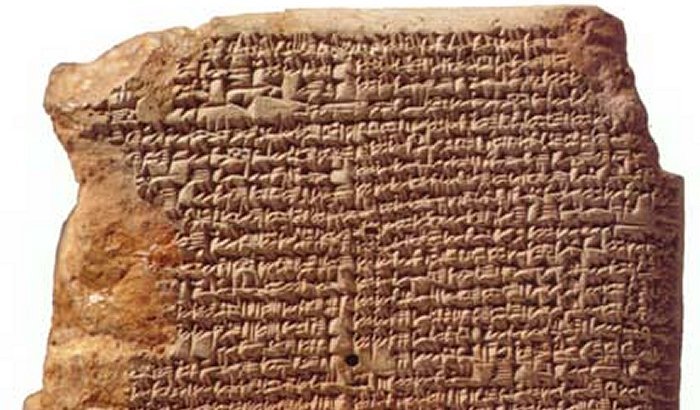 MUL.APIN, a Babylonian compendium that deals with many diverse aspects of Babylonian astronomy and astrology. source
MUL.APIN, a Babylonian compendium that deals with many diverse aspects of Babylonian astronomy and astrology. source
The result of these observations defined the concept of the ecliptic and its division into twelve parts, along which they placed twelve signs of the Zodiac. The MUL.APIN cuneiform tablets - the essential source of Babylonian astronomy - represent a set of ancient astronomical records that are believed to be forerunners of the present-day zodiac.
At the time of their introduction, they coincided with constellations with the same names. The tablets were created in Babylon around 687 BC and contained approximately 200 astronomical observations, including measurements related to several constellations.
Long-Lasting Debate On MUL.APIN Cuneiform Tablets
However, many archaeologists believe they are only transcriptions of much earlier records of astronomical observations made by Assyrian astronomers, who observed their sky about 2,300 BC.
The date of the origin of these observations has been disputed for a longer time.
The earliest copies were recovered from the royal library of the Assyrian King Assurbanipal (667-629 BC) in Nineveh and also from Assur.
Now, the majority of scholars believe that the MULAPIN text was originally compiled around 1000 BC, while the latest copies date back to around 300 BC.
The text on the tablets corresponds to the first constellation of the year, MULAPIN "The Plough," which is identified with the double star in the constellation of Andromeda, about 350 light-years from the Earth, known as Triangulum plus Gamma Andromedae. Today we can quickly locate these bright stars in the sky because they form the Big Dipper.
Further, the text lists the names of 66 stars and constellations and further gives a number of indications, such as rising, setting, and culmination dates, that help to map out the basic structure of the Babylonian star map.
When Bradley Schaefer, an astrophysicist at Louisiana State University in Baton Rouge, studied the MUL.APIN tablets, he calculated that the observations date back to 1,370 BC, give or take a century. The observations include the day each year that certain constellations first appeared in the dawn sky and were recorded in the region of Assur.
However, these dates change over the millennia because of a tiny wobble in the Earth's axis.
Small Tablets Of Great Importance
The text covers two MUL.APIN tablets, and possibly a third additional one, which still remains unrecovered.
The first tablet (8.4 centimeters high incised with miniature cuneiform) is the most important resource for any potential reconstruction of the Babylonian star map as its various sections locate the constellations in relation to each other and to the calendar.
All the major stars and constellations are listed and organized into three broad divisions according to celestial latitude assigning each star to three paths:
The first is the northern path of Enlil, containing 33 stars or constellations; the second is the equatorial path of Anu, containing 23 stars or constellations.
The third one is the southern path of Ea ("Whose House Is Water"), widely known as Enki, the Sumerian god of water, knowledge, mischief, crafts, creation, and one of the Anunnaki. The path of Enki contains 15 stars or constellations.
The heliacal rising dates of 34 stars and constellations are given according to the 360-day 'ideal' calendar year.
In the MUL.APIN tablets, an 'ideal' year composed of 12 'ideal' months, each of which was composed of an 'ideal' 30 days, even though the Babylonians used a lunisolar calendar, indicating both the Moon phase and the time of the solar year.
The second MUL.APIN tablet deals with the Babylonian methods and procedures to regulate the calendar and predict the movements of the sun, moon, and planets.
It is believed that there was also the third tablet (yet undiscovered=), and this one most probably explained celestial (astrological) omens.
Written by - A. Sutherland - AncientPages.com Senior Staff Writer
Copyright © AncientPages.com All rights reserved. This material may not be published, broadcast, rewritten or redistributed in whole or part without the express written permission of AncientPages.com
Expand for referencesReferences:
Hunger H. The Babylonian Astronomical Compendium MUL.APIN
Pannekoek A. A History of Astronomy
Rochberg F. Before Nature: Cuneiform Knowledge and the History of Science
More From Ancient Pages
-
 Aboriginal Australians Were World’s First Astronomers Who Discovered Variable Stars – Astrophysicist Says
Archaeology | Jul 16, 2019
Aboriginal Australians Were World’s First Astronomers Who Discovered Variable Stars – Astrophysicist Says
Archaeology | Jul 16, 2019 -
 Stone Of Scone: Mysterious Stone Of Destiny Has Turbulent Ancient History
Artifacts | Mar 19, 2016
Stone Of Scone: Mysterious Stone Of Destiny Has Turbulent Ancient History
Artifacts | Mar 19, 2016 -
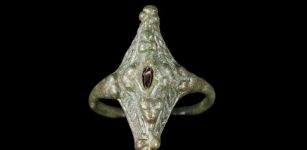 Extraordinary Kite-Shaped Pictish Ring Found At Moray Fort In Scotland
Archaeology | Sep 5, 2024
Extraordinary Kite-Shaped Pictish Ring Found At Moray Fort In Scotland
Archaeology | Sep 5, 2024 -
 DNA Unravels Mysteries Of The Crannogs, Ancient Artificial Islands Older Than Stonehenge
Archaeology | Oct 10, 2022
DNA Unravels Mysteries Of The Crannogs, Ancient Artificial Islands Older Than Stonehenge
Archaeology | Oct 10, 2022 -
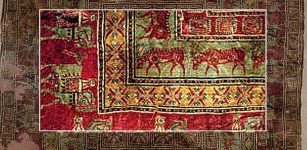 Pazyryk Carpet Found In Scythian Tomb Considered The Oldest Carpet In The World
Artifacts | Oct 5, 2016
Pazyryk Carpet Found In Scythian Tomb Considered The Oldest Carpet In The World
Artifacts | Oct 5, 2016 -
 Common genetic origin for farmers from Central Europe and the Mediterranean area
Human Beginnings | Sep 5, 2015
Common genetic origin for farmers from Central Europe and the Mediterranean area
Human Beginnings | Sep 5, 2015 -
 Mysterious And Abnormally Large Burials Found Near The Black Fortress In Armenia – Who Was Buried There?
Featured Stories | Jan 2, 2025
Mysterious And Abnormally Large Burials Found Near The Black Fortress In Armenia – Who Was Buried There?
Featured Stories | Jan 2, 2025 -
 Never-Ending Battles Between God Ra And Indestructible Apophis In Ancient Egyptian Beliefs
Egyptian Mythology | May 20, 2021
Never-Ending Battles Between God Ra And Indestructible Apophis In Ancient Egyptian Beliefs
Egyptian Mythology | May 20, 2021 -
 On This Day In History: Henry IV Is Crowned King Of France – On Feb 27, 1595
News | Feb 27, 2017
On This Day In History: Henry IV Is Crowned King Of France – On Feb 27, 1595
News | Feb 27, 2017 -
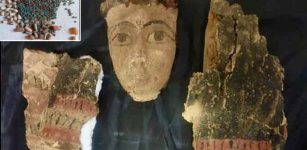 Relics Dated To Byzantine And Late Period Unearthed In Meir Necropolis In Assiut, Upper Egypt
Archaeology | May 15, 2023
Relics Dated To Byzantine And Late Period Unearthed In Meir Necropolis In Assiut, Upper Egypt
Archaeology | May 15, 2023 -
 DNA Of 10,000-Year-Old Luzio Solves The Mysterious Disappearance Of The Sambaqui Builders
Archaeology | Jul 31, 2023
DNA Of 10,000-Year-Old Luzio Solves The Mysterious Disappearance Of The Sambaqui Builders
Archaeology | Jul 31, 2023 -
 Fascinating Discovery Of An Inhabited Underground World In Medieval Wales
Featured Stories | Mar 2, 2024
Fascinating Discovery Of An Inhabited Underground World In Medieval Wales
Featured Stories | Mar 2, 2024 -
 Ancient City Of Gordium, Gordian Knot And Skeleton In Tumulus Of King Midas
Civilizations | Sep 20, 2018
Ancient City Of Gordium, Gordian Knot And Skeleton In Tumulus Of King Midas
Civilizations | Sep 20, 2018 -
 Kofun: Megalithic Keyhole-Shaped Tombs That Belonged To High Status People In Japan
Civilizations | Oct 31, 2018
Kofun: Megalithic Keyhole-Shaped Tombs That Belonged To High Status People In Japan
Civilizations | Oct 31, 2018 -
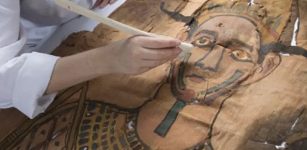 Remarkable Discovery: 2,000-Year-Old Mummy Shroud Found In Museum Collection
Archaeology | Mar 10, 2017
Remarkable Discovery: 2,000-Year-Old Mummy Shroud Found In Museum Collection
Archaeology | Mar 10, 2017 -
 Ancient Miracle Man Possessed Extraordinary Levitation And Telepathic Abilities That Shocked People
Ancient Mysteries | Jun 21, 2018
Ancient Miracle Man Possessed Extraordinary Levitation And Telepathic Abilities That Shocked People
Ancient Mysteries | Jun 21, 2018 -
 New Species Of Stegosaur Is Oldest Discovered In Asia, And Possibly The World
Fossils | Mar 7, 2022
New Species Of Stegosaur Is Oldest Discovered In Asia, And Possibly The World
Fossils | Mar 7, 2022 -
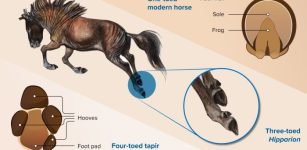 Modern Horses Have Lost Their Additional Toes, Scientists Confirm
Evolution | Jun 21, 2023
Modern Horses Have Lost Their Additional Toes, Scientists Confirm
Evolution | Jun 21, 2023 -
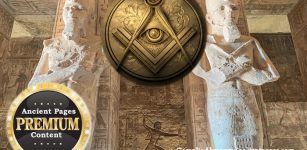 Secret Hidden Freemasonic Messages Concealed In Ancient Egyptian Artifacts And Roman Works – A Misunderstood Object? – Part 1
Ancient Mysteries | Feb 18, 2022
Secret Hidden Freemasonic Messages Concealed In Ancient Egyptian Artifacts And Roman Works – A Misunderstood Object? – Part 1
Ancient Mysteries | Feb 18, 2022 -
 Ancient City Of Ipiutak Was Built By A Fair-Haired Race With Blue Eyes And Not Us – The Inuit Say
Featured Stories | Apr 23, 2019
Ancient City Of Ipiutak Was Built By A Fair-Haired Race With Blue Eyes And Not Us – The Inuit Say
Featured Stories | Apr 23, 2019

